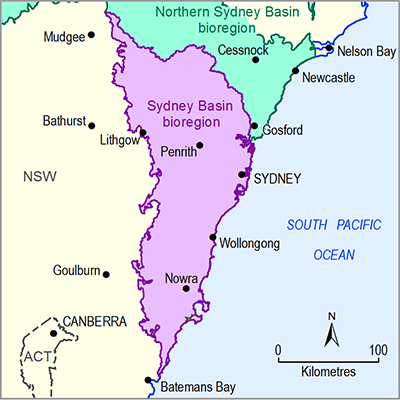Data and information required to assess groundwater quality in the Sydney Basin bioregion are primarily held by DPI Water (formerly the NSW Office of Water) in its groundwater works database (NSW Department of Primary Industries Water, 2015). Additional data are also available from the Bureau of Meteorology (Bureau of Meteorology, 2015). The Bureau of Meteorology is in the process of building a national water information system and water quality is one of the categories of data that it is mandated to collect. The Bureau has surveyed organisations named under the Commonwealth’s Water Act 2007 in the Water Regulations 2008 as to what groundwater quality data is held and collected. For the Sydney Basin bioregion, respondents generally had and collected information about surface water, but were not collecting groundwater quality information. This is consistent with water use in the region being dominated by supply from surface water sources. DPI Water has supplied the Bureau of Meteorology with some groundwater electrical conductivity (i.e. salinity) and trace elements data (NSW Office of Water, Dataset 1). Mining companies often collect water quality data to determine whether the water is fit for on-site uses and to meet licensing conditions, particularly in relation to managing the discharge of low quality water to the environment. This information can be found on the NSW major project assessments website (NSW Planning and Environment, 2016) and usually on mining company websites. Tertiary institutions will also have water quality data, much of it reported in academic theses and peer-reviewed publications. Thus, other information than is reported in DPI Water’s groundwater quality database is likely to be available at locations across the Sydney Basin bioregion.
The sort of information required for a groundwater quality assessment includes:
- purpose of monitoring
- sampling methods
- location information for all groundwater monitoring points, including the aquifer(s) from which the samples were collected
- date of groundwater sample collection and analysis
- laboratory results of groundwater quality analysis.
The groundwater quality data that are available often lack sufficient detail to be interpreted in a meaningful way. Screening interval information, for example, helps to determine what aquifer has been sampled; a sample collected on the day a bore is drilled may not reflect the average condition of the water; infrequent sampling can preclude trend analyses.

